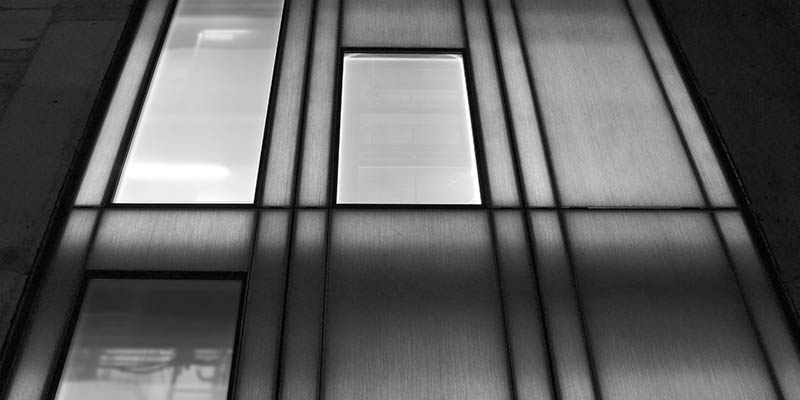Downloads
DOI:
https://doi.org/10.7480/jfde.2014.1-2.880Abstract
Permasteelisa Group developed with Fiberline Composites a new curtain wall system (Thin Environmental Cladding or TEC), making use of pultruded GFRP (Glass Fiber Reinforced Polymer) material instead of traditional aluminum. Main advantages using GFRP instead of aluminum are the increased thermal performance and the limited environmental impact. Selling point of the selected GFRP resin is the light transmission, which results in pultruded profiles that allow the visible light to pass through them, creating great aesthetical effects. However, GFRP components present also weaknesses, such as high acoustic transmittance (due to the reduced weight and anisotropy of the material), low stiffness if compared with aluminum (resulting in higher facade deflection) and sensible fire behavior (as combustible material). This paper will describe the design of the TEC-facade, highlighting the functional role of glass within the facade concept with regards to its acoustic, structural, aesthetics and fire behavior.
How to Cite
Published
Issue
Section
License
Copyright (c) 2015 Alan Tomasi, Danijel Mocibob, Bert van de Linde, Frank Wellershof, Kristian Koldtof

This work is licensed under a Creative Commons Attribution 4.0 International License.
Authors or their institutions retain copyright to their publications without restrictions.
References
ASTM E1300-09a 2009. Standard Practice for Determining Load Resistance of Glass in Building. West Conshohocken: ASTM International
CWCT 2005. Standard for systemized building envelopes. Bath: Centre for Window and Cladding Technology
EN 13501-1 2007. Fire classification of construction products and building elements – Part1: Classification using test data from reaction to ire tests. Brussels: CEN – European Committee for Standardization
ETAG002-1 1999. Guideline for European technical approval for structural sealant systems (SSGS) – part 1: supported and unsupported systems. Brussels: EOTA – European Organization for Technical Approvals
Fiberline Composites 2002. Fiberline Design manual. Middelfart: Fiberline Comspoites A/S
ISO 527-1 2012. Plastics – Determination of Tensile properties – Part 1: General properties. Genève: International Organization for Standardization
Straus7 2004. Finite Element Analyses System Straus7 Release 2.3.3. G+DComputing.
